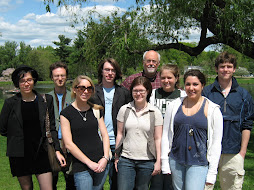By Samantha Henry, Kendra Richardson and Mary Powers
The Connecticut Department of Environmental Protection was created to regulate and prevent pollution from seeping into the ground, the waterways and the air.
These days, says DEP Commissioner Gina McCarthy, its task is more aimed at trying to change human lifestyles, especially actions that affect the environment.
That is often difficult.
“Very often it takes catastrophes for people to change,” McCarthy said. “People don’t want to change… for better or for worse.”
McCarthy said the DEP often looks to the news media to help in getting the message out about how people can help improve the environment. “The journalists’ job is to educate by bringing facts,” said McCarthy.
But with the recent cutbacks at many newspapers that task has become more difficult.
Plus, the few remaining journalists also have trouble, according to McCarthy, with finding scientists that can and are willing to give clear, definite, on-the-record reports that can be understood by the public.
McCarthy and other DEP officials who met recently with students in the environmental journalism class cited the Fenton River as one example of an environmental calamity that was missed by many.
In September of 2005 the Fenton, a primary water source for the University of Connecticut, dried up. It was a particularly dry summer and after students returned for the fall semester the Fenton couldn’t handle the water needs of tens of thousands of students. A significant leak in a water line also contributed to the problem.
The river went completely dry. Thousands of trout and other aquatic organisms died.
Lee Dunbar of DEP’s Bureau of Water Protection and Land Reuse, said it was the worst environmental catastrophe he had been involved in. “You can only kill things one time. Once they’re dead, they’re dead,” Dunbar said.
He was especially upset by what he believed was poor media coverage and very little public concern.
“There was no outcry. There were people that were wicked upset but no one heard about it. It’s upsetting,” Dunbar said.
Since then the university has worked with public officials on a variety of water conservation and other measures to prevent a reoccurrence.
The accident also highlighted what McCarthy said was the biggest environment problem facing Connecticut and the DEP.
Rather than climate change or going green, McCarthy said stream flows and water quantity issues top the DEP’s agenda. She said that is likely to continue into the future.
McCarthy is not one to minimize the impact of global warming. President Obama has nominated her as assistant administrator of the U.S. Environmental Protection Agency’s Office of Air and Radiation. In that capacity, climate change would be a major focus. However, according to recent news reports a Republican U.S. Senator has placed a “hold” on the nomination because he is upset with McCarthy’s position that recognized climate change as a significant environmental threat.
Bob Kaliszewski, the director of planning development at the DEP, said reporters covering the environment have a formidable task in this new age of information. There is a lot of available information, some good, some bad, and some junk.
“There’s not a lot of in depth discussions like in better newspapers, and those are what we really need,” Kaliszewski said. “[Journalists] need to find ways to get the level of depth to get people to understand, with more expanded dialogue.”
Wednesday, May 20, 2009
Subscribe to:
Post Comments (Atom)

No comments:
Post a Comment